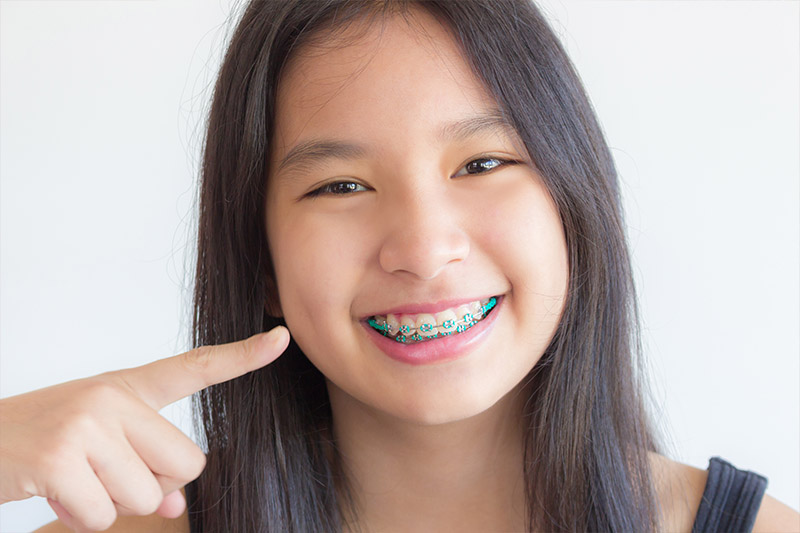Leading Tips for Picking the most effective Cumming Orthodontist for Braces and Aligners
Leading Tips for Picking the most effective Cumming Orthodontist for Braces and Aligners
Blog Article
Comprehensive Guide to Orthodontics Treatments for Dealing With Oral Misalignments
In the realm of orthodontics, the trip to attaining a completely aligned smile involves a myriad of treatments customized to correct oral misalignments. From traditional braces to unnoticeable aligners and even surgical choices, the area of orthodontics provides an array of options to address differing degrees of dental abnormalities. Comprehending the details of each procedure, including their systems, advantages, and possible disadvantages, is vital in making informed choices about one's orthodontic therapy. As we navigate with the thorough overview to orthodontic procedures for remedying dental imbalances, the intricate information of each approach will certainly unravel, shedding light on the course towards a functional and unified oral alignment.
Orthodontic Procedures Review

Along with clear aligners and conventional dental braces, orthodontists might additionally suggest other treatments like headgear, palatal expanders, or retainers to attend to certain placement concerns (cumming braces). These procedures are customized per person's special demands and might include a combination of treatments to accomplish the preferred outcomes. Routine modifications and surveillance are crucial parts of orthodontic treatment to make sure progress is on track and to make any kind of necessary alterations along the road. By undertaking orthodontic procedures, individuals can not just accomplish a straighter smile but additionally enhance their total dental wellness and feature.
Typical Dental Braces: Just How They Function
When thinking about orthodontic therapies for dental imbalances, conventional dental braces stand out as a time-tested method for fixing teeth positioning. Conventional braces are composed of brackets, wires, and bands that work with each other to apply constant stress on the teeth, gradually moving them into the wanted placement.
As stress is applied to the teeth with the dental braces, the bone bordering the teeth is reshaped to support the new tooth positions. People will need normal changes at the orthodontist's workplace to guarantee the dental braces proceed to use the correct stress for efficient teeth activity.
Invisible Aligners: Benefits And Drawbacks
These clear, custom-made trays are essentially undetectable when worn, making them an enticing choice for people looking for a more aesthetically pleasing orthodontic treatment. Individuals can remove the aligners prior to consuming or cleaning their teeth, minimizing the danger of food obtaining stuck in the device and simplifying the cleaning process.

Surgical Orthodontic Options
Surgical treatments in orthodontics present practical alternatives for resolving complex oral imbalances that may not be properly solved via standard orthodontic therapies. While unnoticeable aligners and standard dental braces can remedy numerous orthodontic concerns, particular instances need surgical treatment to accomplish ideal results. Surgical orthodontic options are normally recommended for severe malocclusions, substantial jaw discrepancies, and instances where the underlying bone structure requires modification to attain correct positioning.
One common medical orthodontic treatment is orthognathic surgical treatment, which entails rearranging the jaws to fix useful concerns such as difficulty eating or talking. This surgery is often executed in collaboration with an orthodontist that aids align the teeth prior to and after the treatment. Surgical orthodontics may also involve procedures to subject influenced teeth, remove excess gum cells, or reshape the jawbone to produce a much more unified facial profile.
Prior to thinking about medical orthodontic alternatives, patients undergo a comprehensive assessment to determine the necessity and prospective advantages of such interventions. orthodontist. While surgical treatment may seem complicated, it can substantially enhance both the feature and appearances of the smile in situations where conventional orthodontic treatments fail
Retainers and Post-Treatment Care

Post-treatment treatment involves complying with the orthodontist's guidelines diligently. This may include correct oral health practices, participating in follow-up consultations, and putting on the retainers as suggested. Failure to adhere to post-treatment treatment guidelines can result in regression, where the teeth gradually move back in the direction of their original placements. Constant retainer wear, great dental health, and regular dental examinations are important for keeping the results attained via orthodontic surgical treatment and guaranteeing the lasting stability of the remedied oral positioning.
Conclusion
Finally, orthodontic treatments offer various options for dealing with dental misalignments. Traditional dental braces use steel braces and wires to shift teeth right into correct alignment. Undetectable aligners offer a more very discreet option but may not appropriate for all cases. Surgical orthodontic options are available for much more serious misalignments. Retainers are frequently used post-treatment to maintain the brand-new positioning. On the whole, orthodontic procedures can effectively improve oral wellness and visual look.
As we browse through the thorough overview to orthodontic treatments for dealing with oral misalignments, the elaborate details of each method will unfold, losing light on the course towards a useful and harmonious oral placement. - cumming orthodontist
One of the most common orthodontic therapies is the use of braces, which are composed of metal braces and cables that apply mild stress to gradually shift teeth right my response into the preferred setting.When thinking about orthodontic therapies for oral misalignments, typical dental braces stand out as a reliable method for remedying teeth placing. Additionally, invisible aligners may not be suitable for complex orthodontic issues that call for more substantial teeth activity, as they are typically recommended for light to modest instances. Retainers are personalized orthodontic tools developed to hold teeth in their remedied positions after the completion of orthodontic therapy.
Report this page